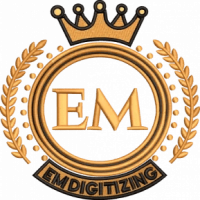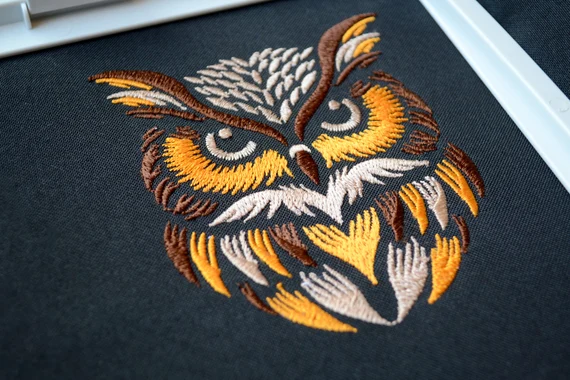Digitizing For Embroidery

Digitizing for Embroidery: The Art of Converting Designs into Perfect Stitches
Embroidery has transitioned from a traditional handcraft to a sophisticated digital art form, all thanks to digitizing for embroidery. This intricate process translates creative artwork into stitch-ready files that embroidery machines can execute with precision. Whether you're a novice or a seasoned professional, mastering embroidery digitizing is key to producing high-quality embroidered designs.
Understanding Digitizing for Embroidery
Digitizing for embroidery is not just about converting images; it's about meticulously crafting a stitch blueprint that ensures seamless embroidery execution. Unlike basic image conversion, embroidery digitizing demands careful planning of stitch types, stitch order, and density to maintain design integrity. Proper digitizing eliminates issues like misaligned stitches, fabric puckering, and inefficient stitch sequences, ensuring a flawless final product.
The Process of Embroidery Digitizing
The journey from concept to embroidered masterpiece involves several crucial steps:
1. Artwork Preparation – The design is refined and formatted for embroidery digitizing software.
2. Stitch Assignment – The digitizer selects the appropriate stitch types, directions, and densities based on fabric properties and design complexity.
3. Pathway Optimization – Efficient sequencing minimizes excessive thread jumps and trims, ensuring smoother embroidery.
4. File Conversion – The finalized design is saved in a format compatible with the specific embroidery machine.
5. Test Stitching – A trial run is conducted to assess accuracy, making any necessary refinements before mass production.
Top Embroidery Digitizing Software Choices
Quality digitizing for embroidery depends heavily on the software used. Some of the leading options include:
1. Wilcom Embroidery Studio – A top-tier solution for professional embroidery digitizing.
2. Hatch Embroidery – User-friendly yet powerful software catering to both beginners and experts.
3. Brother PE-Design – Optimized for Brother embroidery machines, ensuring seamless compatibility.
4. Embird – A modular program offering flexibility and extensive customization options.
5. Ink/Stitch – A free, open-source tool for those exploring embroidery digitizing without upfront investment.
Why Proper Embroidery Digitizing Matters
A well-digitized embroidery design guarantees:
1. Precision and Clarity – Clean, detailed stitching that enhances the visual appeal of the embroidery.
2. Fabric Suitability – Correct stitch density adjustments prevent fabric distortion.
3. Production Efficiency – Optimized stitch sequences reduce machine downtime and improve workflow.
4. Universal Compatibility – Various file formats ensure hassle-free embroidery across different machines.
Manual vs. Automatic Digitizing: Which Should You Choose?
When it comes to digitizing for embroidery, both manual and automatic methods have their place:
1. Manual Digitizing – Each stitch is carefully placed by hand, offering superior accuracy and customization. While time-consuming, it produces high-quality results.
2. Automatic Digitizing – Software converts an image into a stitch pattern instantly. While convenient, it often lacks the refinement and detail that manual digitizing provides.
Should You Hire a Professional Digitizer?
If you lack experience or time, outsourcing digitizing for embroidery to an expert can be a wise decision. Key factors to consider when choosing a professional digitizer include:
1. Expertise and Portfolio – Reviewing past projects ensures quality expectations are met.
2. Client Testimonials – Positive feedback indicates reliability and skill.
3. Turnaround Time – Quick yet accurate delivery is crucial for business operations.
4. Machine Compatibility – The digitizer must provide the correct file formats for your embroidery machine.
Overcoming Common Digitizing Challenges
Embroidery digitizing presents some technical hurdles, but with the right approach, they can be resolved:
1. Overly Dense Stitches – Excessive stitch density can cause fabric distortion. Solution: Adjust stitch spacing and use appropriate underlay stitches.
2. Thread Breakage – Improper sequencing may lead to frequent thread breaks. Solution: Optimize stitch order and adjust machine tension settings.
3. Design Shifting – Unstable fabric or poor hooping can cause misalignment. Solution: Utilize stabilizers and ensure proper hooping techniques.
Final Thoughts
Digitizing for embroidery is a transformative process that bridges artistic creativity with machine precision. Whether you use advanced software or enlist a professional, understanding the intricacies of digitizing ensures that your embroidery projects are executed with excellence. By mastering embroidery digitizing, you can achieve stunning, high-quality designs that stand out in the competitive world of embroidery.
Note: IndiBlogHub features both user-submitted and editorial content. We do not verify third-party contributions. Read our Disclaimer and Privacy Policyfor details.



